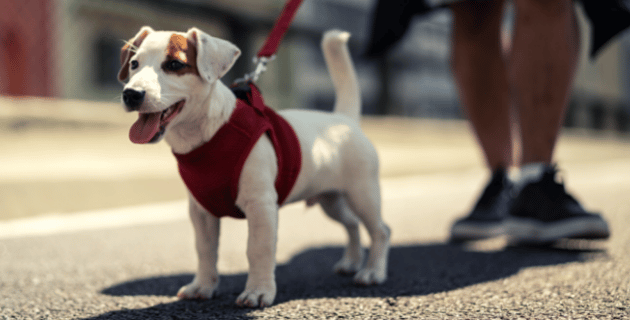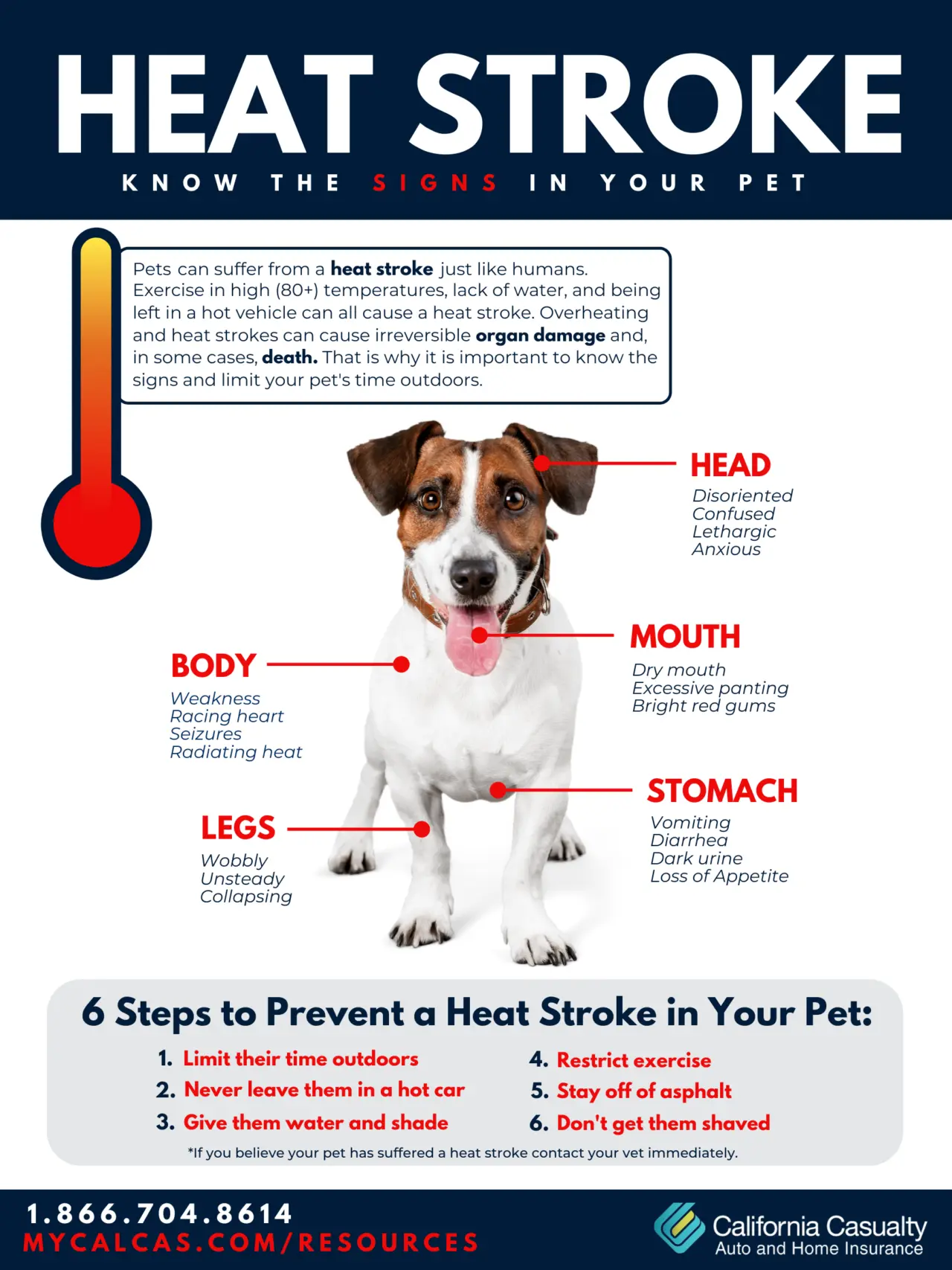It’s time to go for a w-a-l-k. (Cue the excited wags and barks.) But walking in the summer heat presents some challenges for our fur babies. From hot pavements to high temperatures, conditions can be dangerous for your pup.
Follow these tips to safely walk your dog in the summer heat, including signs to watch out for in case of heatstroke.
Tip #1: Time your walks for the coolest part of the day.
Even when it’s hot outside, there are times of day when it’s a little less hot. Plan around the temperatures, scheduling an early morning walk or an evening stroll. In general, before 9 am and after 6 pm are usually the coolest times.
Tip #2: Bring water along.
Bring a water bottle and a dog bowl to give your dog a drink on hot walks. In addition, consider a spray mist bottle or a wet towel to use to cool your dog down.
Pro Tip: Introduce the bowl and the sprayer at home first with your dog to make sure your pup is comfortable with them.
Tip #3: Seek shade.
Walk in the shade as much as possible and choose a route where you can stop in the shade. Walk on the grass if possible. If not, the concrete sidewalk is generally cooler than the street made from asphalt. If your dog lies down in the cool grass, let him. It’s his way of regulating his temperature.
Tip #4: Check the pavement.
When the temperature is just 86 degrees outside, the pavement can reach a sizzling 135 degrees! That’s way too hot for your pup’s sensitive paws. Before you walk, check the sidewalk or road. Put the back of your hand directly on the pavement. If you can keep it there comfortably for 5-10 seconds, it’s okay to walk. If not, avoid the asphalt and concrete at all costs.
A word about dog boots: You can buy dog boots or paw protectors to protect against hot pavement. Look for non-slip, water-resistant shoes that fit your dog’s paws well and stay on. Also, choose breathable ones. Since dogs do sweat through their paws, that will help keep them comfortable.
Tip #5: Protect against sunburn.
If your dog has a shorter coat or bare spots that can burn, consider dog-friendly sunscreen.
For dogs with long fur, you can give your dog a summer haircut, but don’t shave her to the skin. Dogs need an inch of fur to protect against sunburn.
Tip #6: Know when to turn back.
Your dog will communicate that he has had enough. If he continues to lie down and pant, that’s a signal that the heat is getting to him. Go slowly, and if your dog seems unenthused to walk, don’t push it. Head back and enjoy some air-conditioned indoor time.
Tip #7: Know the signs of burned paws.
Burned paws are painful for our pups. Make sure you check your fur baby’s paws after summer walks. Look for these signs of possible burns:
-
- Limping
- Excessive biting of feet
- Discolored pads, redness or blisters on the paws
Tip #8: Know the signs of heatstroke in dogs.
Heat exhaustion is not just for people. Our pets can get heatstroke, too. In fact, it can be very serious and even deadly. That’s because dogs don’t have sweat glands. Instead, they rely on panting to cool themselves down. When that doesn’t work, the heat builds up in their bodies, causing heatstroke.
Some dogs are more susceptible. These include older dogs, dogs with shorter snouts, obese dogs, and dogs battling illness. Watch for these signs:
-
- Excessive panting and drooling
- Difficulty breathing
- Fever (dog’s nose is dry and hot rather than wet and cool)
- Bright red, gray, purple, or blueish gums
- Rapid pulse
- Weakness
- Vomiting or diarrhea
- Lack of urine
- Muscle tremors
- Dizziness
If your dog exhibits signs of heatstroke or has burns on his or her paws, call your veterinarian immediately. You may be asked to bring your pet in for treatment.
For emergencies like this, pet insurance can help. Remember, you can easily add pet insurance from Pet’s Best to your California Casualty auto or home policy. Find out more about what pet insurance can cover by talking with a California Casualty customer service representative today.
This article is furnished by California Casualty, providing auto and home insurance to educators, law enforcement officers, firefighters, and nurses. Get a quote at 1.866.704.8614 or www.calcas.com.
- Graduation – When to Remove Your Child from Your Auto Policy - May 18, 2023
- How to Prevent Catalytic Converter Theft - May 17, 2023
- How Much Does Home Insurance Cost? - May 17, 2023


